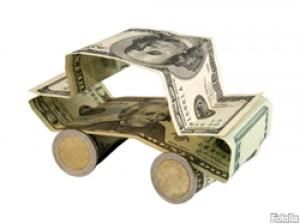No headline provided

July 1, 2011
If you look at two sets of data often used to track pricingtrends for auto insurance in America over time, you would see thatthe price of insuring a car in the United States dropped by a totalof 6.75 percent between 2004 and 2008, and it also rose by a totalof 3.4 percent during the same period.
But just how could two reputable sources of information – theNational Association of InsuranceCommissioners (NAIC) and the Bureau of Labor Statistics (BLS) – reportthat the average cost both went up and down at the same time?
“When you look at the BLS and NAIC numbers, you need to takeinto consideration what each is really measuring,” says Cesar Diaz,CEO of auto insurance quote comparison siteonlineautoinsurance.com. “At their cores, the NAIC and BLSstatistics are tracking two different things, and the differencebetween them has important implications for consumers.”
Learning the crucial difference between price andexpenditure
To generate its data, the BLS – which reported the 3.4 percentincrease – takes sample driver profiles from all over America, getsquotes from real companies for those profiles and then trackschanges in their prices over time.
Since they are only samples, the drivers that they theoreticallyinsure cannot adjust deductibles, change financial protectionlevels, improve their driving records or conduct a car insurancecomparison to find a better deal – all of which may help reducethe policyholder’s economic burden. Rather, the BLS set the policyand driver details in stone when they chose the profiles, and itonly adjusts the premiums in response to vehicle upgrades andchanges in insurers’ pricing structures.
If the insurers suffer huge losses and have to adjust theirpricing formulas, premiums simply go up. The holders of thosepolicies cannot react as those in the real world can.
The NAIC – which reported the 6.75 percent decrease – on theother hand, looks at the total premiums that policyholders pay forliability, comp and collision coverage in each state and thendivides that by the total number of insured drivers who purchasedthem. This process in effect gives a view of the actualexpenditures that policyholders in each state have.
“Statistics show that, on average, when consumers keep the samepolicy, prices are likely to go up after a while,” Diaz says. “Butconsumers can offset the increases by making smart choices when itcomes to coverage options.”
How to offset gradual price increases
There are plenty of websites and consumer guides devoted toshowing consumers how to slash premiums, but here are a couple ofthe more reliable tactics:
*Adjust your comprehensive and collision deductibles. For thosewho are struggling to pay the cost of insuring their own carsagainst physical damage, you may want to consider raisingdeductibles or eliminating this optional coverage on older cars.The Insurance Information Institute says raising deductibles canamount to savings of anywhere between 15 and 40 percent. Doing somay result in greater out-of-pocket expenses in the event of aclaim, though.
*Driving less? Ask about low-mileage discounts. According to thelatest report from the Federal Highway Administration, the numberof miles that Americans drive in the month of April was at itslowest point this year since 2003. Motorists who put in fewer milesbehind the wheel statistically are at a lower risk of getting intoan accident, and insurers may reward them with significant pricebreaks.
*Shop around. While the drivers in the BLS statistics areessentially chained to their insurers, you are not. Nearly 8,000domestic insurers were selling coverage in 2009, according to theNAIC, with a significant chunk of them providing financialprotection for vehicles. That’s a lot of competition, and all ofthose companies are trying to come up with new incentives for youto get a policy through them. You can easily find cheap autoinsurance through quote-comparison sites that will help youefficiently evaluate your options and track down the best deals foryour individual driver profile.








Leave a Comment